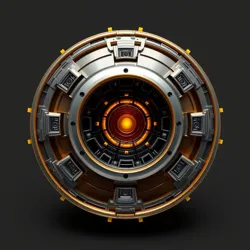Mark IV Thoracic Fusion Core

The Mark IV Thoracic Fusion Core is a revolutionary micro-fusion power system developed for advanced biomechanical organisms. First introduced in 2165, it represents a significant advancement in miniaturized power generation, particularly for synthetic arthropod applications.
Technical Specifications
The core utilizes quantum-compressed plasma chambers contained within a thoracic housing measuring only 8 millimeters in diameter. Its primary fusion reaction is sustained through a network of microscopic magnetic containment fields, enabling continuous operation for up to seven years without refueling.
Key Components
- Nano-scale plasma injectors
- Quantum containment matrix
- Thermal regulation system
- Crystalline energy conversion grid
Applications
The Mark IV is primarily used in advanced biomechanical insects, including: - Hextron Beetles - Mantis-class Combat Units - Mechanical Pollinators
Efficiency and Output
The core achieves an unprecedented 99.7% energy conversion rate through its proprietary quantum cascade system. Standard output ranges from 50 to 500 watts, depending on configuration and load requirements. The system can temporarily boost output to 1000 watts during emergency situations.
Safety Features
Advanced safety mechanisms include: - Automatic shutdown protocols - Quantum state monitoring - Emergency containment systems - Thermal dispersal grid - Anti-cascade buffers
Environmental Impact
The Mark IV produces minimal waste, with helium being its primary byproduct. This helium is typically captured and recycled through specialized gas processing systems integrated into larger synthetic ecosystems.
See Also
- Synthetic Power Generation
- Biomechanical Energy Systems
- Thoracic Engineering
References
- Journal of Micro-Fusion Technology
- Synthetic Power Quarterly
- Biomechanical Engineering Review